Caution: This post involves heavy graphics, and will eat up bandwidth. It could take some time to load if you are a mobile user, or someone with a slow connection: You have been warned.
I had the opportunity to tour the Timney Trigger’s manufacturing facility this fall, and follow their production process from start to finish. I can’t promise you a gun in every picture, but I can promise you animated robots…
It starts with design. Someone asks for an upgraded trigger for their favorite rifle. Then another person asks, and another. Timney keeps a list, and when it reaches a certain length, designer and product director Calvin Motley starts building a virtual trigger.
A look at some of the prototypes and parts on Calvin’s desk. When I visited he was tinkering with a Kalashnikov trigger & safety assembly, and trying to figure out what to do with the Beretta ARX-100. If there was a gun that needed Timney’s help … as a Tavor shooter I shouldn’t be too hard on the ARX.
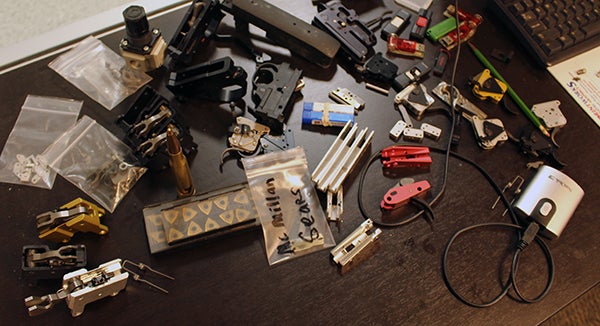
Once Calvin has a design that works in the virtual space, they produce and test a prototype. Prototypes are built on the same machines as production triggers, which takes us out onto the factory floor…

Small parts, like the sear, hammer, and the trigger itself are cut on a wire EDM machine. (not dance music, the cutting method) They take a pre-drilled plate of steel, submerge it in water, and cut a pattern of parts from the plate using wire to conduct electrical discharge that removes material.
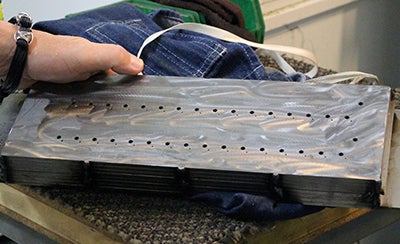
Wire EDM has the advantage of less tool marks, and works well to cut multiple small pieces from a single sheet of steel. The leftovers after the EDM machine has done its work:
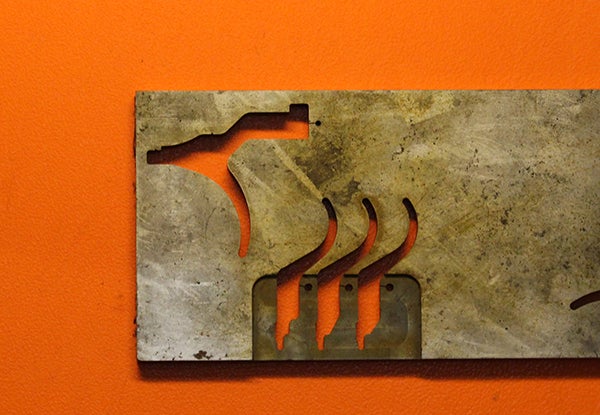
But for larger, more intricate pieces like the trigger housings, an automated CNC machine is used…
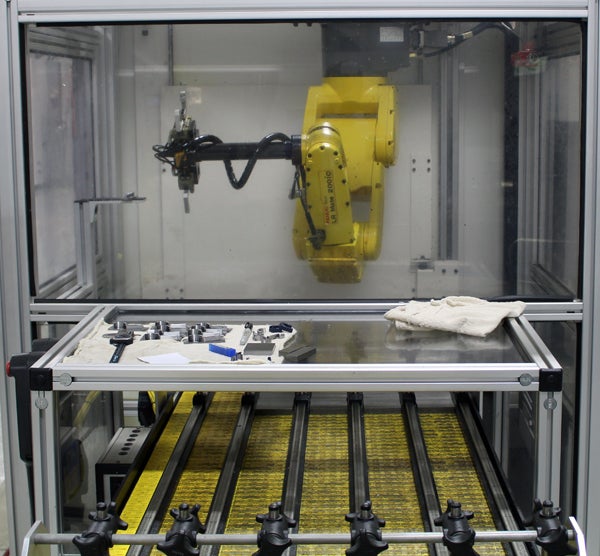
A robotic arm grabs squares of tool steel off the feed tray and places them inside the chamber…
Where the CNC bits do their work under a constant stream of coolant & lubricant.
Which produces a completed trigger housing from the steel block.
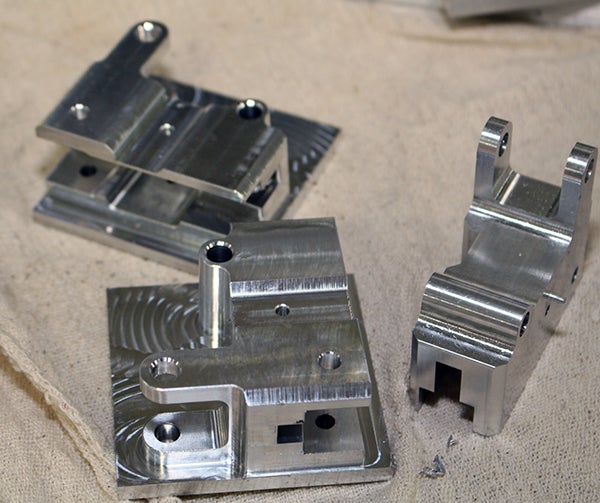
Small pieces, like safeties knobs and retention pins, are produced on a bar-fed milling machine.

Each part is colored and coated separately. This is the only step not done in-house.
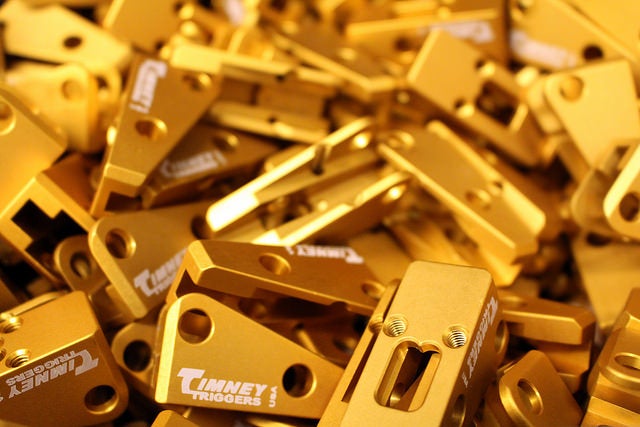
Then it’s off to assembly!
All the components are put together and tested by hand.
Each unit’s pull weight is set, and tested anywhere from 15-30 times before it’s signed off on. Timney doesn’t make 2 stage triggers. Instead they focus on producing single stage triggers that have a crisp, creep-free break. There’s a specific feel that their testers are looking for in every unit.
Which leaves us with a batch of completed triggers!
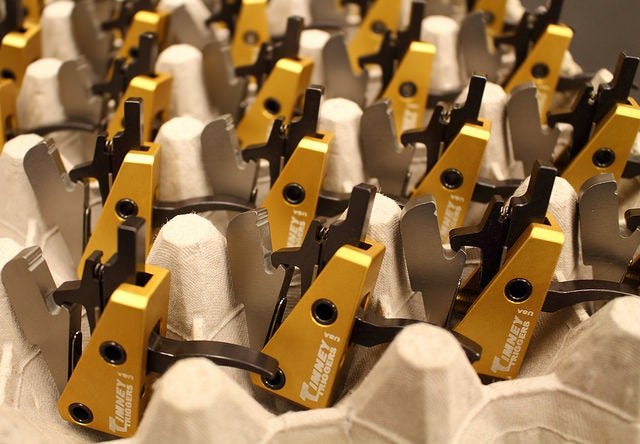
After that, it’s up to you to install one in your rifle. The design philosophy on these units is that they should be gunsmith free. Each trigger pack is a complete replacement that should you should be able to install on your own without the help of a gunsmith.
I’ll admit I’ve skipped some of the fine details of production in favor of moving pictures, but if you’re interested in more of the nitty gritty side of the plant there are great writeups from Tom McHale and Nick Leghorn that explore the Timney Facility.
 Your Privacy Choices
Your Privacy Choices
